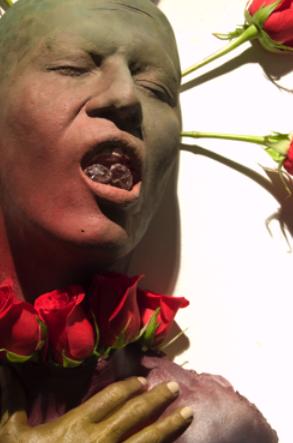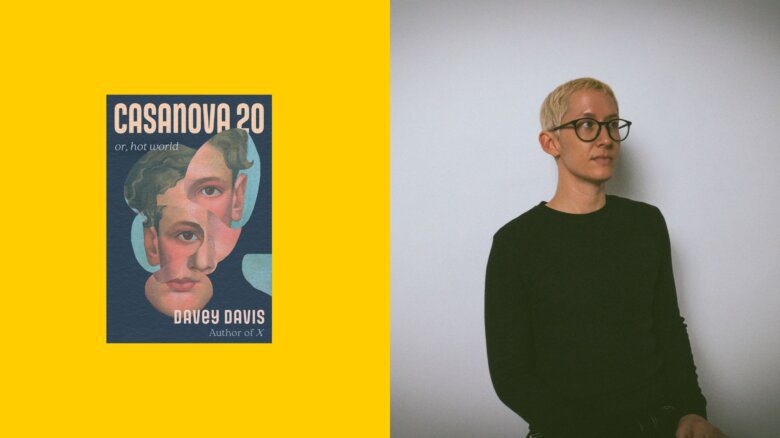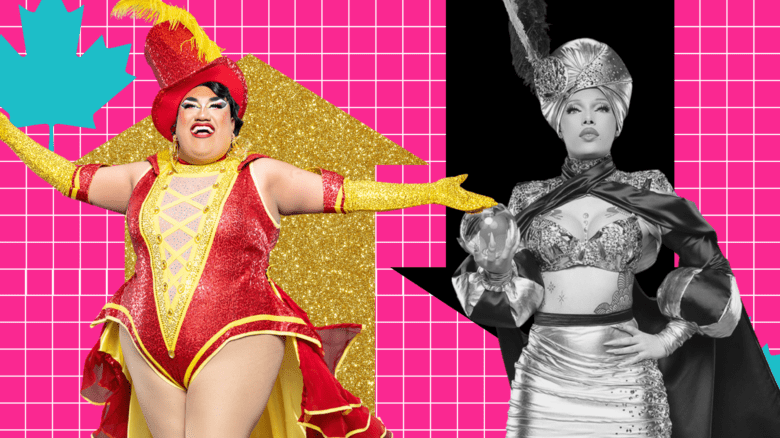“My critique of religion is towards the body,” says artist Erik Tonatiuh. “How the body is not seen as natural or beautiful, but as sinful. That we have to hide our bodies.”
In Tonatiuh’s upcoming show at the Ontario College of Art and Design University (OCAD U), Transmogrifying the Christian Body, this familiar religious tendency toward corporal shame is manifested in a series of sculptures, installations and paintings that reimagines the terms on which we allow our bodies to be defined.
Tonatiuh’s surrealist wax figures, most without heads, hands or feet, are suspended eerily throughout the space. The bodies are writhing, distorted, swept up in what could just as easily be religious rapture as excruciating pain.
In Faith, the only piece in the show with a definitive title, and one of few with a head or a face, an androgynous yellowed and green figure just barely touches its own neck, its expression gesturing toward a painful spiritual ecstasy. Decked in a halo and necklace of roses, with two gems perched on its bottom lip, the typical saint depiction is torn between the beauty of a natural body and the socialized instinct to escape it.
“This piece has the influence of the imagery of a saint in a church, but the subject matter is different,” Tonatiuh explains. “It’s actually the First Nations idea of the two spirits, so it has to do more with sexuality. My sculpture deals more with purity, with the distortion and formation of the body itself, sometimes with a mix of different genders.”
Indeed, there is something about Tonatiuh’s discoloured and disfigured forms that defies categorization. These familiar images — the crucified body, a violently martyred saint or a believer overcome by enthusiasm or shame — collapse into one, but also become fractured in the same conceptual motion. Perhaps their refusal to be wholly understood is what makes these pieces that much more haunting, even a bit scary.
While none of the pieces are downright gruesome, their violent aspects slightly muted by a strange palette of organic colours, some are a bit shocking. In one piece, a series of ceramic cherubs forms the shape of a cross on a wall. In the centre sits a bloody red, and oh-so-real, cow’s heart.
“In order to create work, I have to have this drama, this theatricality. I have to evoke repulsion,” Tonatiuh says. “And Catholicism has lots of imagery that is very dark and grotesque. Seeing Christ with blood and suffering on his face doesn’t inspire me to pray or be peaceful.”
Tonatiuh, who grew up in Mexico City surrounded by Catholic art before coming to OCAD U to study painting in 2004, is not personally religious. But he is keenly aware of the way religion modifies how he, and everybody else, can approach the human body. In this project, he hopes to take those changes and make them his own.
“It’s not really a direct representation of how the church has made us perceive our bodies. It’s more a new story, a new narrative that I do with these works,” he says. “You cannot remove religion from the world, so even though religion has changed the perception of our bodies, you have to find the beauty, and you have to feel comfortable with your own body.”
In addition to the eerie 3D work that dominates the show, Tonatiuh has installed a series of paintings with equally distorted and surreal bodies and faces. During the opening reception on Jan 12, Tonatiuh’s own body will become the subject in a performance piece that takes up those same issues.
“I’m reclaiming my own body, and I’m proud of my own body. So I have to deal with my own body through the performance.”

 Why you can trust Xtra
Why you can trust Xtra


